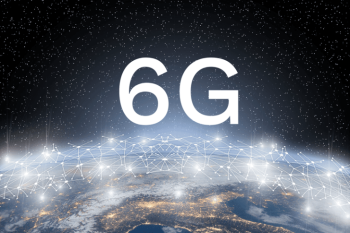
Written By: Ben Coffin, 6G Solutions Marketing Manager, Keysight Technologies

Ben Coffin, 6G Solutions Marketing Manager, Keysight Technologies
6G is expected to be commercially available by 2030, revolutionising connectivity with lightning-fast speeds, unprecedented bandwidths, and ultra-low latencies. It will transform various sectors, including telecommunications, manufacturing, healthcare, transportation, and entertainment.
In its International MobileTelecommunications 2030 (IMT-2030) initiative, the International Telecommunications Union (ITU) laid out its vision for the sixth generation of wireless communications.
Industry groups have published 6G visions, including the Next GenerationMobile Networks Alliance (NGMN), the 6G Flagship, and the Next G Alliance.
They envision the following use cases and applications for next-generation communication technologies.
1. Ubiquitous Connectivity
Under 6G, improved inclusivity and bridging of the digital divide are pivotal social objectives. Voice, video, and broadband services will be available even in remote areas and in disaster zones through advances beyond 5G, such as better non-terrestrial networks, airborne and space-borne based station swarms, and mesh access networks.
2. Immersive Personal Digital Experiences
Network bandwidths of 50–200 gigabits per second (Gbps) are expected, perhaps even one terabit per second (Tbps). With per-device throughputs of 300–500 megabits per second (Mbps) and microsecond latencies, users will enjoy rich communication and digital experiences through immersive high-resolution video calls, extended reality displays, and remote telepresence through multi-sensory and holographic interfaces.
3. Joint Communications and Sensing
The sub-terahertz frequencies being considered under 6G will enable combining communication signals with waveforms that resemble those of imaging radars. The same antennas, transceivers, and spectrum can be reused for both communications and sensing, enabling use cases like using smartphones for autonomous driving or for detecting people in low-visibility rescue missions.
4. Automobiles
Automobile companies are actively researching and prototyping the use of 6G technologies for improved autonomous driving systems, real-time data processing, vehicle-to-everything communication, and advanced sensing capabilities.
Additionally, thanks to their reliability, time-sensitive networking features, and ultra-low latencies, these new, supercharged wireless networks are being considered as replacements for existing wired automotive networks. This will also reduce vehicle weights and improve sustainability through higher fuel efficiency.
5. Industrial-Scale Communications
Expect widespread public and private networks with extensive use of internet-of-things (IoT) devices for smart cities, agriculture, transportation, energy grids, and environmental monitoring. This will be possible due to high connection densities of 1 million to 100 million devices per square kilometer (km), high reliability, adaptive data rates, low power consumption, extended coverage, and high security.
6G-networked robots and automated vehicles will be extensively used in factories, warehouses, and logistics.
“6G is expected to be commercially available by 2030, revolutionising connectivity with lightning-fast speeds, unprecedented bandwidths, and ultra-low latencies.”
6. Precise Positioning
Indoor and outdoor positioning with accuracies of 1–10 centimeters (cm) will enable precise object and presence detection, navigation, imaging, and mapping.
7. Sustainability
The research and development into 6G networks explicitly aim for sustainability goals like high energy efficiency, low carbon footprint, and low emissions in telecom infrastructure as well as all the other industries they bolster, like manufacturing, automotive, and farming.
Moving 6G Forward
The 6G standardisation roadmap has not yet started. But the ITU has published its IMT-2030 vision for the sixth generation of wireless communications.
Guided by its goals, several industry and academic groups have set up alliances for researching and prototyping new technologies as well as enhancements for this innovation. These groups include the Next Generation Mobile Networks Alliance, the Next G Alliance to shape the direction of this technology in the U.S., the 6G Flagship run by the University of Oulu in Finland, and the Hexa-X and Hexa-X-II projects that are defining the European blueprints for development. These groups will send their technical proposals to the ITU around 2027.
The ITU’s expert groups will review their proposals and select the ones that are best aligned with its 6G vision. By then, the 3rd Generation Partnership Project (3GPP), which develops the official standards, will have published its Release 19 and Release 20 specifications for 5G-Advanced and is expected to work on the 6G standards as part of Release 21, which will be published by 2030.
 (0)
(0) (0)
(0)Archive
- October 2024(44)
- September 2024(94)
- August 2024(100)
- July 2024(99)
- June 2024(126)
- May 2024(155)
- April 2024(123)
- March 2024(112)
- February 2024(109)
- January 2024(95)
- December 2023(56)
- November 2023(86)
- October 2023(97)
- September 2023(89)
- August 2023(101)
- July 2023(104)
- June 2023(113)
- May 2023(103)
- April 2023(93)
- March 2023(129)
- February 2023(77)
- January 2023(91)
- December 2022(90)
- November 2022(125)
- October 2022(117)
- September 2022(137)
- August 2022(119)
- July 2022(99)
- June 2022(128)
- May 2022(112)
- April 2022(108)
- March 2022(121)
- February 2022(93)
- January 2022(110)
- December 2021(92)
- November 2021(107)
- October 2021(101)
- September 2021(81)
- August 2021(74)
- July 2021(78)
- June 2021(92)
- May 2021(67)
- April 2021(79)
- March 2021(79)
- February 2021(58)
- January 2021(55)
- December 2020(56)
- November 2020(59)
- October 2020(78)
- September 2020(72)
- August 2020(64)
- July 2020(71)
- June 2020(74)
- May 2020(50)
- April 2020(71)
- March 2020(71)
- February 2020(58)
- January 2020(62)
- December 2019(57)
- November 2019(64)
- October 2019(25)
- September 2019(24)
- August 2019(14)
- July 2019(23)
- June 2019(54)
- May 2019(82)
- April 2019(76)
- March 2019(71)
- February 2019(67)
- January 2019(75)
- December 2018(44)
- November 2018(47)
- October 2018(74)
- September 2018(54)
- August 2018(61)
- July 2018(72)
- June 2018(62)
- May 2018(62)
- April 2018(73)
- March 2018(76)
- February 2018(8)
- January 2018(7)
- December 2017(6)
- November 2017(8)
- October 2017(3)
- September 2017(4)
- August 2017(4)
- July 2017(2)
- June 2017(5)
- May 2017(6)
- April 2017(11)
- March 2017(8)
- February 2017(16)
- January 2017(10)
- December 2016(12)
- November 2016(20)
- October 2016(7)
- September 2016(102)
- August 2016(168)
- July 2016(141)
- June 2016(149)
- May 2016(117)
- April 2016(59)
- March 2016(85)
- February 2016(153)
- December 2015(150)
